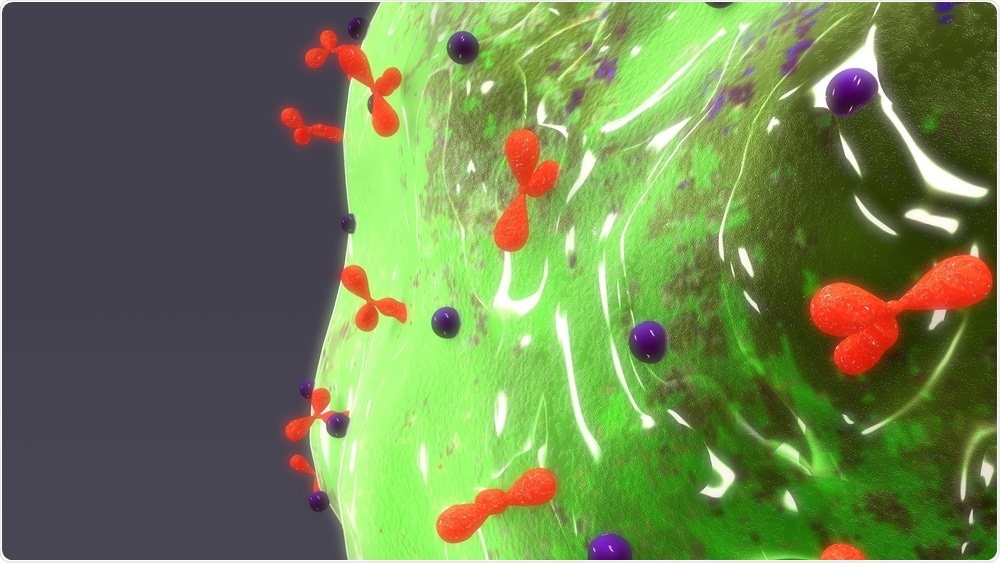
A novel approach to intraplaque mast cell characterization in atherosclerosis
Researchers from Leiden University in the Netherlands have developed a new technique for characterizing intraplaque mast cells; the primary immune mediators of atherosclerotic plaque development.
 sciencepics | Shutterstock
sciencepics | ShutterstockUsing a new means of flow cytometric analysis, the researchers devised an accurate way to identify a specific subpopulation of these intraplaque mast cells by unique surface proteins and determine their mechanism of activation. The detailed insight into these atherosclerotic mediators provides a key opportunity for the development of new therapies for human atherosclerosis.
The findings, which were published in the journal Cells, build on previous research that has already established the specific role of the CD117+FcεRI+ intraplaque mast cell subtype in plaque development, progression, and destabilization. However, their characterization previously depended on immunohistochemistry, which characterizes cell identity by only a few surface marker.
This, in turn, has limited scientists' ability to precisely characterize mast cells, including knowledge of their activation status. Now, the development of flow-cytometric based methods by Kritikou et al., has enabled multiple-marker based identification of the specific mast cell type, and their activation status presentin human atherosclerotic plaques.
Out with immunohistochemistry and in with flow cytometry
Professor Kritikou and her team have developed a new flow-cytometry method that allows both mast cell identity and activation status to be accurately determined using several cell markers. Together, Kritikou and her team were able to describe the activating mechanisms that underlie their pathological role in atherosclerosis.
Mast cell activation is known to occur predominantly through the complex of the antibody IgE, bound to its high-affinity receptor, FcεRI. This sensitizes them to antigen binding. In response to an antigen, cross-linking of the IgE-FcεRI complex activates mast cells, culminating in release of immune-response mediators.
Kritikous’s data confirmed that this classical model presents the main activating mechanism for intraplaque mast cells. Further characterization of these activating IgE fragments has revealed their location at the plaque tissue, corroborating the correlation between circulating IgE levels and catastrophic cardiovascular events. Their work demonstrates IgE as a risk factor in cardiovascular episodes and provided understanding of how allergy and atherosclerosis are linked.
Kritikou and her team analyzed 22 samples of atherosclerotic plaques harvested from both femoral and carotid locations in patients. Immunohistochemical staining was performed to identify the mast cells. Subsequent antibody staining with fluorescent labels against characteristic surface markers (CD45, CD117, FcεRI, CD117 and IgE) as well as the granular mediator, tryptase released on mast cell activation, for flow cytometric analysis. To determine their activation status the researchers screened for the co-presence of CD63, a mediator of degranulation and IgE, a sensitizer of degranulation.
The major mast cell activation pathway – unearthing an IgE-based target for therapy
The use of flow cytometry enabled several markers to be used in the identification of the specific subpopulation of mast cells responsible for advancing atherosclerotic progression in patients. Further screening for activation revealed mast cells from both locations were positive for two markers, IgE and CD63, indicating their highly activated status; a known marker of atherosclerotic progression in humans.
A small minority of the intraplaque mast cells were activated in the absence of any IgE-fragments bound at the surface. This finding led researchers to conclude that the predominant means of CD117+FcεRI+ intraplaque mast cell subtype activation occurs via IgE binding to FcεRI while a small number of cells are activated independently of IgE. As Kritikou and researchers state, these findings ‘pave the way for potential therapeutic intervention through targeting IgE-mediated actions in human atherosclerosis.’,
Further investigation into mast cell function is hoped to unveil new activation pathways that will present opportunities for the development of new therapies against atherosclerosis progression.
Acknowledgments
This project is funded by grant 95105013 (program translational research from ZonMW and the Dutch Heart Foundation).
Source:
Kritikou, E., et al. (2019). Flow Cytometry-Based Characterization of Mast Cells in Human Atherosclerosis. Cells. https://doi.org/10.3390/cells8040334























.png)











No hay comentarios:
Publicar un comentario